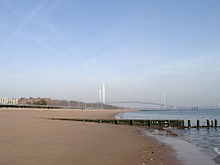Remote Patient Monitoring in Staten Island

Reducing Hospital Readmission Rates in Staten Island
Amelia Home Care addresses avoidable readmissions by blending live 24/7 Professional Remote Care Coordination (RCC) with the latest intuitive remote patient monitoring.
Our team provides timely interventions, bridges external care services, and addresses patient psychosocial needs. RCCs collect and share patient data with the healthcare team, a key pillar in preventing avoidable readmissions.
With thousands of patients, Amelia Home Care is seeing a reduction in readmission rates of 91 to 95 percent.
Remote Care Coordination in Staten Island
Our Remote Care Coordinators (RCCs) provide face-to-face, video chat interactions with your patients to monitor and assist in adherence and reducing readmissions while improving clinical patient outcomes.
With the ability to visually record patient vitals, assess patient needs for medication refills, food, transportation to medical appointments, and social interactions, our coordinators develop personalized patient care with established protocols.
Available 24/7, RCCs cover the extended hours and weekends when staffing from Home Health is typically limited. Amelia Home Care patients thrive with more attention and interaction, and their satisfaction scores prove it!
Care Pathways for Staten Island Clients
Amelia Home Care has over 95 Care Pathways currently available to our clients including combination pathways for patients with multiple co-morbidities.
These pathways include branch logic and RCC protocol for follow-up questions. Our RCCs are trained to identify and report issues with post-acute and post-surgical patients, including the identification of SIRS criteria, which may lead to sepsis.
In addition to pathways questions, vital signs, and video conferencing, we have educational videos, teach-back questions, reminders, and the ability to assist patients in obtaining appointments, video-conferencing with family members, and other members of the care team.

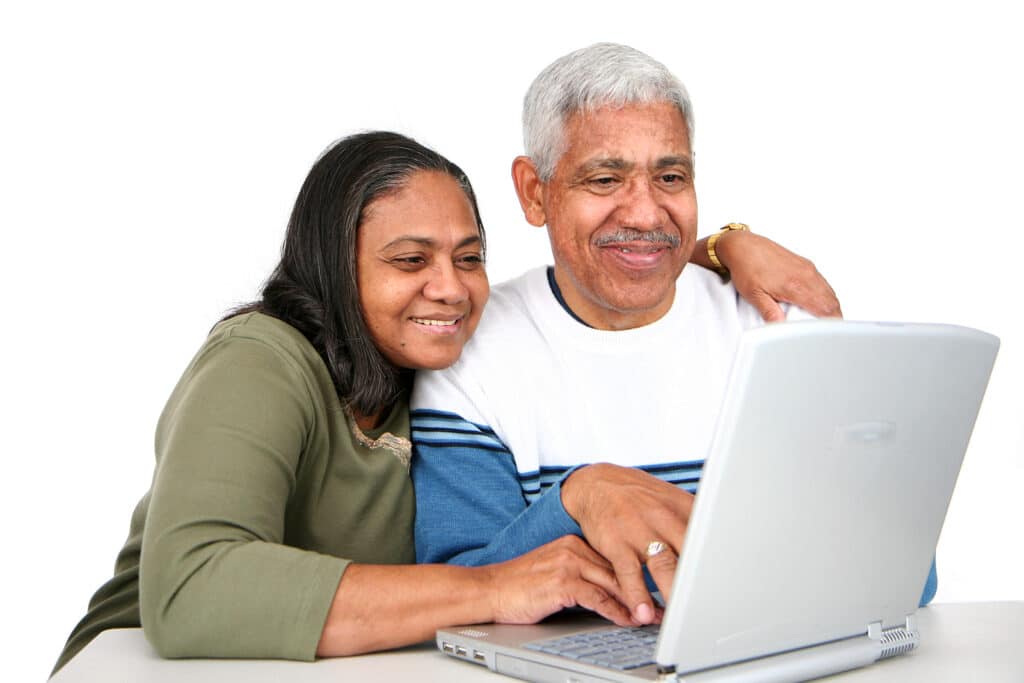
Psychosocial Needs and Socialization for Staten Island Residents
Often, many of our patients are seniors between 70 to 95 years old, and many are lonely and isolated. The RCC’s responsibility is to engage in casual conversations, beyond the illness and discuss life, and joyful matters.
For patients who require more attention, often receive multiple video calls per day and are assigned to volunteers to check in with the patients.
The results are astonishing, leading to reduction of readmissions, happier patient satisfaction, and increased RPM utilization rate.
Amelia Home Care Health Platform
Based on the patient’s capability and comfort level utilizing their preferred communication device, Amelia Home Care provides a variety of platforms to ensure as many patients are enrolled in the program as possible.
For patients accustomed to utilizing their own personal smartphone or tablet (Apple or Android), an easy-to-download application is provided.
A telehealth kit, which consists of a tablet with built-in internet and wireless medical devices and is intuitive to operate, can be delivered to the patient’s home.
If both are not viable options, their assigned RCC can render phone calls to retrieve ongoing data collection so no patient is left out of the program.
Authorized physicians, nurses, nursing staff, and Home Health agencies will have access to patient data and telehealth communication with the patient based on their security access privileges.
Oftentimes, physicians and nurses find it more convenient to work with the assigned RCC.
Based on schedule or ad hoc calls, the RCC can engage the physician on a group video conference with the patient by sending a link to the physician’s email or phone.
Upon clicking the link, the physician will be able to join the secured video conference call with the patient.
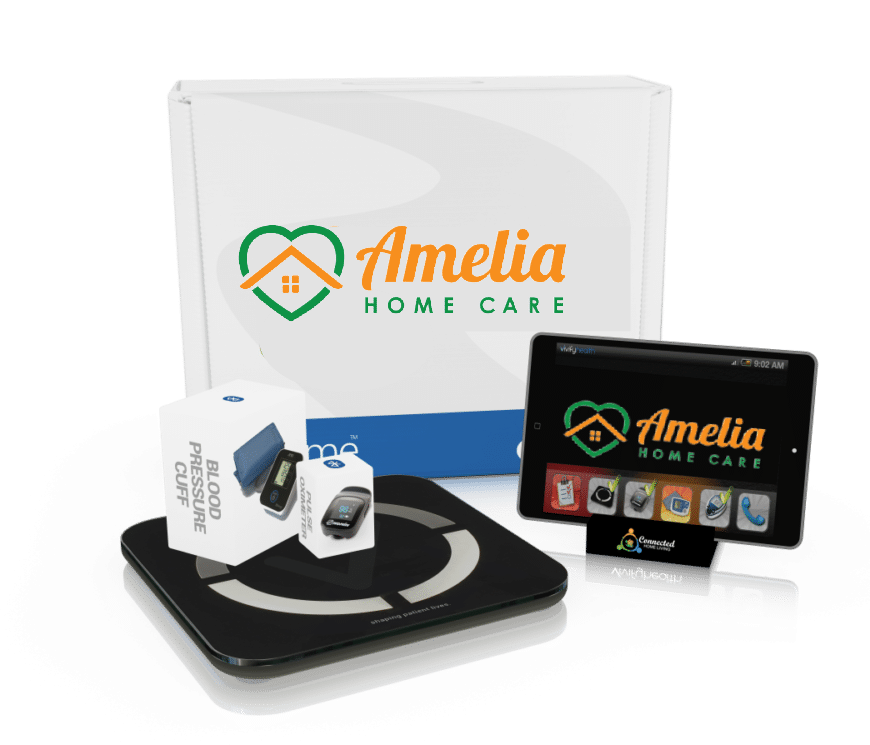

How We Help Hospitals and Health Systems in Staten Island
TURN-KEY communication center for efficient coordination of care – no implementation or set up fee.
FACILITATE safe return to home – enabling shorter hospital length of stay.
REDUCE unnecessary hospital readmissions.
ENABLE the efficient and streamlined monitoring of post-acute care.
MANAGE the volume of incoming data based upon clinically defined thresholds.
COLLECT clinically meaningful data to enhance and adjust care.
SUPPORT client/patient autonomy through education and communication.
ENHANCE resource management to ensure clinical visits are necessary, with documented justification.
DRIVE value-based care by increasing and enhancing ongoing interactions between patients and clinicians.
DEFINE the standard of care in the marketplace.
How We Help Physician Groups in Staten Island
TURN-KEY remote monitoring communication center for efficient coordination of care.
FACILITATES ease of access to patient data.
MANAGES the volume of incoming data based upon clinically defined thresholds.
COLLECT clinically meaningful data to enhance and adjust care.
SUPPORT the delivery of higher quality care to more patients.
REDUCE unnecessary hospital readmissions.
ENABLE the efficient and streamlined monitoring of post-acute care.
SUPPORT client/patient autonomy through education and communication.
ENHANCE resource management to ensure clinical visits are necessary, with documented justification.
POSITION practice for the value-based care market by increasing ongoing interactions between patients and clinicians.
DEFINE the standard of care in the marketplace.
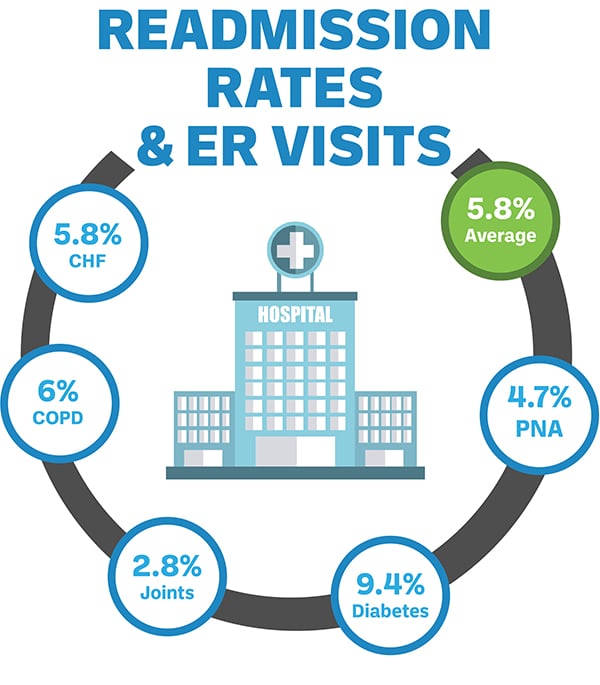

How We Help Accountable Care Organizations Who Serve Staten Island
- CHRONIC CARE management supporting a reduction in Medicare costs.
- IMPROVED communication channels between multiple providers and specialists.
- ENABLE enhanced care coordination throughout the medical care continuum.
- REDUCE unnecessary and redundant healthcare service.
- FACILITATE your ability to meet CMS standards for cost savings.
- COLLECT clinically meaningful data to enhance and adjust care.
- SUPPORT client/patient autonomy through education and communication.
- ENHANCE resource management to ensure clinical visits are necessary, with documented justification.
- DRIVE value-based care by increasing and enhancing ongoing interactions between patients and clinicians.
- ENGAGE patients in their care and drive patient centricity.
Programs and Plans

Amelia's Tele-Home Care Family Pack for Staten Island Residents
How Does Virtual Caregiving Work?
- Sign-up loved ones based on their needs and technological ability using a smartphone, tablet, computer or landline
- Amelia Home Care develops a care plan and trains your loved ones to use our telehealth solution
- Daily Health Surveys monitor your health
- Live Remote Care Coordinators (RCCs) evaluate your needs and provide support
- RCCs escalate issues to a Family Member or Nurse, based on pre-defined protocols
- Nurse or Physicians may assess and treat patient using video triage*
- RCC can coordinate medication, food, and supplies
Are you ready for an Amelia Home Care Certified Technologist to install and train your family to be connected and safe. With Amelia’s Tele-Home Care Family Pack, Seniors can live independently longer, safe from falls and other common concerns.
There’s an emergency button to request help at anytime, and also activity sensors that will detect hazards and call for help when it’s need.
Seniors can live independent longer, safe from falls and other common concerns, with Amelia’s Tele-Home Care Family Pack.
There’s an emergency button to request help at anytime, and also activity sensors that will detect hazards and call for help when it’s need.
Best of all, caregivers can check in anytime – without disturbing the senior or invading their privacy.
How Does Amelia’s Tele-Home Care Family PackWork?
Amelia Home Care is a Certified Technologist that Installs and Trains for You!
Install The Family Pack.
A personal assist button, front and back door entry sensors, and motion sensors for the Kitchen, Hallway, and Living Room are easy to install. It includes everything you need to address concerns of falls, wellness, and loneliness in a new collaborative way. Installation is fast and simple.
The activities of daily living are learned.
The normal lifestyle patterns of the senior are privately learned, without a wearable, and insights can be accessed by members of your Trusted Circle of friends and family.
Smart Home Center
This makes your home intelligent. Simply plug it in to power and plug in a wired internet connection. The free app will walk you through the whole process.
Personal Assist Button
Push it at any time to alert the people in your Trusted Circle and let them know that assistance is needed. Or change its behavior to record access to medication.
Front Door and Back Door Entry Sensors
They attach to a home’s high-traffic doors in just minutes so you can know when someone comes and goes. Install extras on medicine cabinets, refrigerators, and microwaves.
Kitchen, Hallway, and Living Room Motion Sensors
They alert for potential falls, sleep problems, and more. We recommend one motion sensor every 500 square feet of living space, so the base pack covers about 1,500 square feet.
Professional Monitoring. 24/7.
When lifestyle patterns change unexpectedly, automatically alert your Trusted Circle and the Emergency Call Center to get help fast.
The Amelia Home Care Trusted Circle
This intelligent system uses easy to install wireless sensors around the home (no cameras) to learn daily activity patterns and alerts family, professional caregivers, and emergency services (if necessary) of falls and potential hazards even if the emergency button is out of reach.
The Trusted Circle is an exclusive group of contacts who care for the wellbeing of a friend or loved one using Amelia Home Care Family in their home.
Trusted Circle contacts receive Group SMS Notifications and In-App Push Notifications to actively participate and immediately respond to falls and other potential hazards or simply stay in the know. Contacts can also use the Amelia Home Care Family app to get real-time wellness status updates, daily reports, and more.
Join the Trusted Circle
- You will receive a text message invitation from Amelia Home Care.
- Click on the provided link, download the Amelia Home Care app, and follow the instructions to setup your Amelia Home Care account.
- Add the Amelia Care Family Emergency Call Center phone number to your contact list for safekeeping. Unknown numbers are often considered SPAM so it’s best to be ready to help when called upon


How it Works
This intelligent system uses easy to install wireless sensors around the home (no cameras) to learn daily activity patterns and alerts family, professional caregivers, and emergency services (if necessary) of falls and potential hazards even if the emergency button is out of reach.

Know that everything is okay. Get real-time wellness status updates, daily reports, and more.
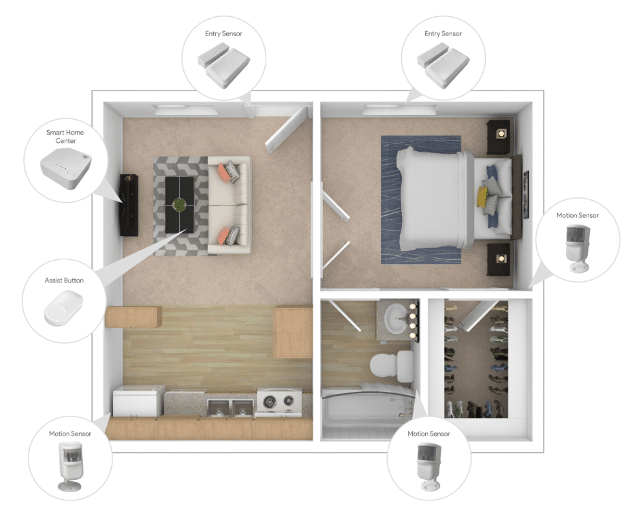
Monitors the home 24/7 including fall detection, failure to return, sleep monitoring, and more.
When problems arise, Amelia Home Care Family communicates outward in a tiered escalation methodology as urgency increases. This approach gives family and professional caregivers an opportunity to get involved and deescalate issues before dispatching Emergency Services.

Get alerted and know what’s happening.
Get involved right away to help resolve the issue.
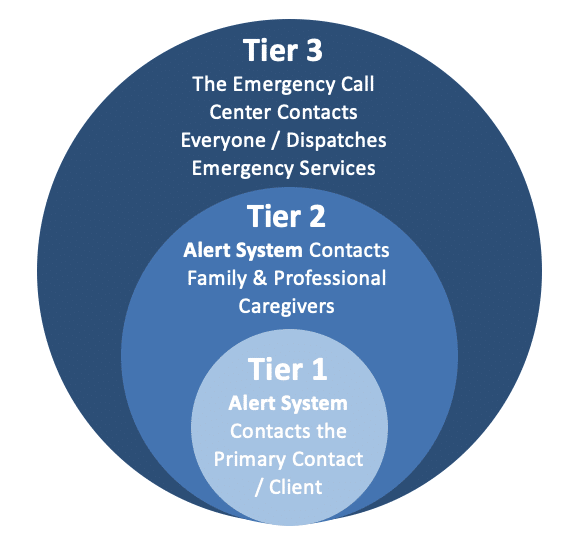
Group SMS Notifications, In-App Push Notifications,
24/7 Call Center, & Emergency Services
Features for Every Lifestyle
Captures and describes lifestyle patterns into the app
- Check-in remotely, review the Daily Report, and know where people were last seen.
- Detects when people are home, away, or sleeping.
- Record access to medication with a variety of medication activity sensors.
Measures sleep quality with an activity sensor in the bedroom. - Track trips to the bathroom, showers, and bathroom falls with a bathroom motion sensor.
- Identifies meal activities with access to the microwave, coffee, and fridge.
Alerts when problems are detected
- Fall detection without a button: alerts on unexpected inactivity in the home.
- Medical alert button to call for emergency help or simply request assistance.
- Alert if occupants do not get up in the morning.
- Notify if occupants did not make it to the bedroom at night.
- Detect if the stove is left on, unattended.
- Delivers reminders if people forgot to take medication.
- Mold and mildew detection with added humidity sensors.
- Integrates fall and SOS alerts from Apple Watch and Samsung Galaxy Watch.
- Uses text messages for alerts, so family participants don’t have to download an app.
Proven to help fight senior depression, loneliness, and isolation
- Coordinates and assigns a new family member to reach out each day, with suggestions on what to talk about from the last person.
- Smart Speaker support to control the home, play music, and connect family.
Adds needed support for Dementia and Alzheimer’s
- Alerts when perimeter doors open to detect wandering.
- Predicts when occupants should arrive back home, and alerts if they’re not.
- Pings your phone if someone is caught roaming around the house at night.
- Water leak detection for the bathroom and toilet.
Expandable
- Apple Watch and Samsung Galaxy Watch keep track of falls.
- Amazon Alexa and Google Home integrate to control with your voice.
- Smart Locks secure the home and provide access to the Trusted Circle.
- Smart Bulbs and Plugs to control lighting and appliances with your voice.
- Connected Thermostats integrate to control comfort and save energy.
- Security system enabled with a siren and keypad helps seniors feel in control.
About Staten Island
Staten Island (/ˌstætən/) is a borough of New York City, coextensive with Richmond County, in the U.S. state of New York. Located in the southwest portion of the city, the borough is separated from New Jersey by the Arthur Kill and the Kill Van Kull and from the rest of New York by New York Bay. With an estimated population of 476,143 in 2019,[1] Staten Island is the least-populated of the boroughs but is the third-largest in land area at 58.5 sq mi (152 km2).
A home to Lenape natives, the island was settled by Dutch colonists in the 17th century. It was one of the 12 original counties of New York state. Staten Island was consolidated with New York City in 1898. It was formally known as the Borough of Richmond until 1975, when its name was changed to Borough of Staten Island.[4] Staten Island has sometimes been called “the forgotten borough” by inhabitants who feel neglected by the city government.[5][6]
The North Shore—especially the neighborhoods of St. George, Tompkinsville, Clifton, and Stapleton—is the most urban part of the island. It contains the designated St. George Historic District and the St. Paul’s Avenue-Stapleton Heights Historic District, which feature large Victorian houses. The East Shore is home to the 2.5-mile (4 km) F.D.R. Boardwalk, the fourth-longest boardwalk in the world.[7] The South Shore, site of the 17th-century Dutch and French Huguenot settlement, developed rapidly beginning in the 1960s and 1970s and is now mostly suburban in character. The West Shore is the least populated and most industrial part of the island.
Motor traffic can reach the borough from Brooklyn via the Verrazzano-Narrows Bridge and from New Jersey via the Outerbridge Crossing, Goethals Bridge and Bayonne Bridge. Staten Island has Metropolitan Transportation Authority (MTA) bus lines and an MTA rapid transit line, the Staten Island Railway, which runs from the ferry terminal at St. George to Tottenville. Staten Island is the only borough that is not connected to the New York City Subway system. The free Staten Island Ferry connects the borough to Manhattan across New York Harbor. It provides views of the Statue of Liberty, Ellis Island, and Lower Manhattan.
Staten Island (/ˌstætən/) is a borough of New York City, coextensive with Richmond County, in the U.S. state of New York. Located in the southwest portion of the city, the borough is separated from New Jersey by the Arthur Kill and the Kill Van Kull and from the rest of New York by New York Bay. With an estimated population of 476,143 in 2019,[1] Staten Island is the least-populated of the boroughs but is the third-largest in land area at 58.5 sq mi (152 km2).
A home to Lenape natives, the island was settled by Dutch colonists in the 17th century. It was one of the 12 original counties of New York state. Staten Island was consolidated with New York City in 1898. It was formally known as the Borough of Richmond until 1975, when its name was changed to Borough of Staten Island.[4] Staten Island has sometimes been called “the forgotten borough” by inhabitants who feel neglected by the city government.[5][6]
The North Shore—especially the neighborhoods of St. George, Tompkinsville, Clifton, and Stapleton—is the most urban part of the island. It contains the designated St. George Historic District and the St. Paul’s Avenue-Stapleton Heights Historic District, which feature large Victorian houses. The East Shore is home to the 2.5-mile (4 km) F.D.R. Boardwalk, the fourth-longest boardwalk in the world.[7] The South Shore, site of the 17th-century Dutch and French Huguenot settlement, developed rapidly beginning in the 1960s and 1970s and is now mostly suburban in character. The West Shore is the least populated and most industrial part of the island.
Motor traffic can reach the borough from Brooklyn via the Verrazzano-Narrows Bridge and from New Jersey via the Outerbridge Crossing, Goethals Bridge and Bayonne Bridge. Staten Island has Metropolitan Transportation Authority (MTA) bus lines and an MTA rapid transit line, the Staten Island Railway, which runs from the ferry terminal at St. George to Tottenville. Staten Island is the only borough that is not connected to the New York City Subway system. The free Staten Island Ferry connects the borough to Manhattan across New York Harbor. It provides views of the Statue of Liberty, Ellis Island, and Lower Manhattan.
Consolidation with New York City
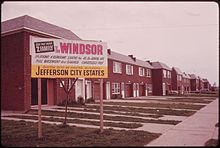

The towns of Staten Island were dissolved in 1898 with the consolidation of the City of Greater New York, as Richmond County became one of the five boroughs of the expanded city. Although consolidated into the City of Greater New York in 1898, the county sheriff of Staten Island maintained control of the jail system, unlike the other boroughs, which had gradually transferred control of the jails to the Department of Correction. The jail system was not transferred until January 1, 1942. Staten Island is the only borough without a New York City Department of Correction major detention center.
The construction of the Verrazzano-Narrows Bridge, along with the other three major Staten Island bridges, created a new way for commuters and tourists to travel from New Jersey to Brooklyn, Manhattan, and areas farther east on Long Island. The network of highways running between the bridges has effectively carved up many of Staten Island’s old neighborhoods. The bridge opened many areas of the borough to residential and commercial development, especially in the central and southern parts of the borough, which had been largely undeveloped. Staten Island’s population doubled from 221,991 in 1960 to 443,728 in 2000.[28] Nevertheless, Staten Island remained less developed than the rest of the city. A New York Times article in 1972 stated that despite the borough having 333,000 residents, parts of the island still maintained a bucolic atmosphere with woods and marshes.[29]
Throughout the 1980s, a movement to secede from the city steadily grew in popularity, notably championed by longtime New York state senator and former Republican Party mayoral nominee John J. Marchi. The campaign reached its peak during the mayoral term of David Dinkins (1990–1993), after the U.S. Supreme Court invalidated the New York City Board of Estimate, which had given equal representation to the five boroughs. Dinkins and the city government opposed a non-binding secession referendum, contending that the vote should not be permitted by the state unless the city issued a home rule message supporting it, which the city would not. Governor Mario Cuomo disagreed, and the vote went forward in 1993. Ultimately, 65% of Staten island residents voted to secede, through the approval of a new city charter making Staten Island an independent city, but implementation was blocked in the State Assembly.[30][31]
In the 1980s, the United States Navy had a base on Staten Island called Naval Station New York. It had two sections: a Strategic Homeport in Stapleton and a larger section near Fort Wadsworth, where the Verrazzano-Narrows Bridge enters the island. The base was closed in 1994 through the Base Realignment and Closure process because of its small size and the expense of basing personnel there.
Fresh Kills and its tributaries are part of the largest tidal wetland ecosystem in the region. Its creeks and wetlands have been designated a Significant Coastal Fish and Wildlife Habitat by the New York State Department of Environmental Conservation. Opened along Fresh Kills as a “temporary landfill” in 1947, the Fresh Kills Landfill was a repository of trash for the city of New York. The landfill, once the world’s largest man-made structure,[32] was closed in 2001,[33] but was briefly re-opened for the debris from Ground Zero following the September 11 attacks in 2001. It is being converted into a park. Plans for the park include a bird-nesting island, public roads, boardwalks, soccer and baseball fields, bridle paths, and a 5,000-seat stadium.[34] Today, freshwater and tidal wetlands, fields, birch thickets, and a coastal oak maritime forest, as well as areas dominated by non-native plant species, are all within the boundaries of Fresh Kills.
Parkland
Staten Island includes thousands of acres of federal, state, and local park land, including the “greenbelt” and “blue belt” park systems and the Gateway National Recreation Area, in addition to hundreds of acres of private wooded areas. The National Park Service maintains full-time wildland firefighters to patrol Staten Island sites in wildfire brush trucks.
The parks on Staten Island are managed by various state, federal and local agencies.
Five sites are part of the 26,000-acre (110 km2) Gateway National Recreation Area, managed by the U.S. National Park Service and patrolled by the United States Park Police:
Two New York State parks are managed by the New York State Office of Parks, Recreation and Historic Preservation:
New York State Park Police officers patrol these parks and the surrounding streets.
359 acres (145 ha) of State Forests, state wildlife management areas and Wetlands are managed by the New York State Department of Environmental Conservation:
- Saint Francis Woodland
- Butler Manor Woods
- Arden Heights Woods
- Todt Hill Woods
- North Mount Loretto State Forest
- Lemon Creek Tidal Wetland Wildlife Management Area
- Blosers Wetland Wildlife Management Area
- Goethal Pond Wetland
- Bridge Creek Tidal Wetland
- Old Place Creek Tidal Wetland
- Oakwood Beach Wetland
- Sharrots Shoreline Natural Resource Area
- Sawmill Creek Wetland
The 359 acres (145 ha) of NYS Department of Environmental Conservation land throughout the island are patrolled by New York State Department of Environmental Conservation Police officers and one NYS DEC Forest Ranger, who has the dual task of law enforcement and fire suppression.
The New York City Department of Parks and Recreation manages 156 parks, including:
The Fresh Kills Landfill was the world’s largest landfill before closing in 2001,[42] although it was temporarily reopened that year to receive debris from the September 11 attacks.[43] The landfill is being redeveloped as Freshkills Park, an area devoted to restoring habitat. The park will become New York City’s second largest public park when completed.[44]
The Staten Island Ferry is the only transportation directly from Staten Island to Manhattan, roughly a 25-minute trip.[151] The St. George Terminal, first opened in 1886,[152] was rebuilt in 1951[153] and again in the 2000s.[154] The ferry has been fare-free since 1997. The Staten Island Ferry transports over 60,000 passengers per day. It runs 24/7 every 15 to 20 minutes during weekday rush hours and every 30 minutes at other times.[155] The ferries and both of its terminals are patrolled by a combination of the New York City Department of Transportation, New York City Police Department, United States Coast Guard and private security contractors.[156]
An NYC Ferry route is planned to start operating in 2021 between St. George Terminal and Manhattan’s West Side. This route will be operated separately from the Staten Island Ferry and will charge a fare.[157][158]

Map of Staten Island
Map of Directions from Staten Island to Amelia Home Care
Driving Direction from Staten Island to Amelia Home Care
Staten Island, New York
Get on I-278 E from Forest Hill Rd
8 min (2.8 mi)
Head north on Richmond Hill Rd toward Forest Hill Rd
0.1 mi
Turn right onto Forest Hill Rd
1.8 mi
Turn left onto Willowbrook Rd
0.5 mi
Turn right onto Gannon Ave S
279 ft
Slight left onto the I-278 E/Staten Is Expwy ramp to Verrazano Br/Brooklyn
0.3 mi
Continue on I-278 E. Take Belt Pkwy/Leif Ericson Dr to Shore Pkwy in Brooklyn. Take exit 7 from Belt Pkwy/Leif Ericson Dr/Shore Pkwy
13 min (10.8 mi)
Merge onto I-278 E
Toll road
5.6 mi
Use the left lane to take the 16 exit toward Belt Pkwy East
Toll road
1.4 mi
Keep left and merge onto Belt Pkwy/Leif Ericson Dr/Shore Pkwy
3.7 mi
Take exit 7 toward Ocean Pkwy
0.1 mi
Continue on Shore Pkwy. Take Ocean Pkwy to Ocean Parkway Service Rd
7 min (1.1 mi)
Merge onto Shore Pkwy
0.3 mi
Turn right onto Ocean Pkwy
0.4 mi
Turn left onto Ocean View Ave
0.1 mi
Turn right onto Brighton 2nd St
0.1 mi
Turn right onto Brighton Beach Ave
0.2 mi
Turn right onto Ocean Parkway Service Rd
Destination will be on the right
Amelia Homecare, Inc
3007 Ocean Pkwy 1ST FLOOR, Brooklyn, NY 11235
